With Le Creuset, it really is true that good things stand the test of time. My little Le Creuset cast iron enameled sauce pot has been in near-daily use for two decades, and it is still going strong. The positive feelings I have toward this pot reflect years of good cooking experiences.
My green pot is the perfect size to cook a cup of rice (or any grain for that matter), to make enough pasta sauce for my husband and I, or a quick soup, homemade ghee, Indian dal, braised vegetables, or any root vegetable sauté where a lid is required to speed up the cooking.
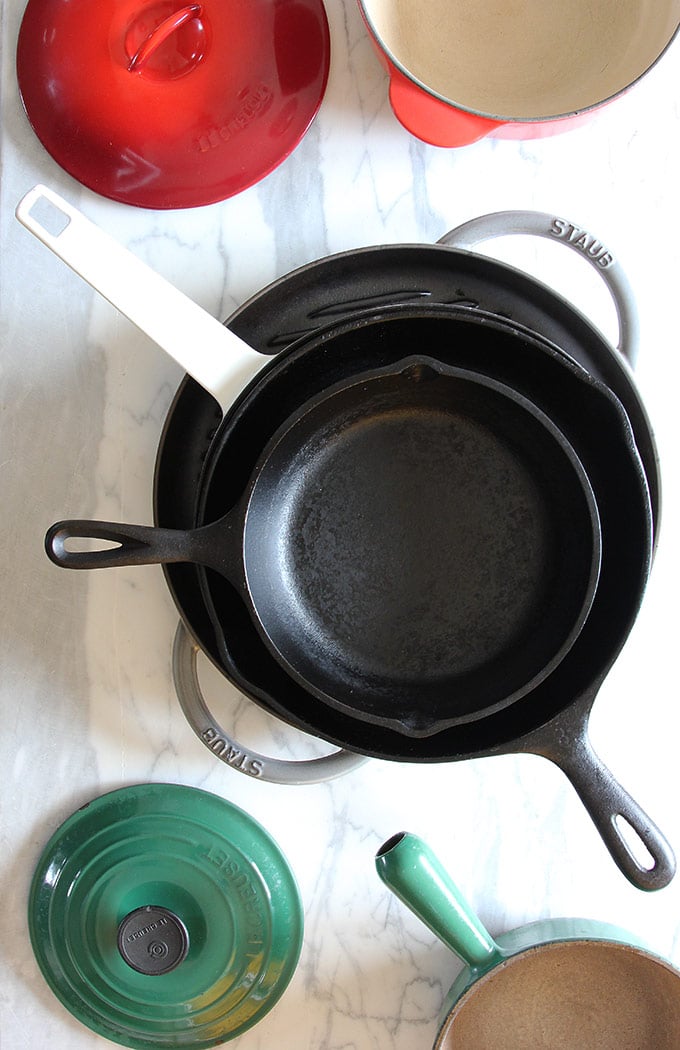
To say it’s versatile is sort of an understatement. It can go straight into the oven as a casserole, or onto a wood stove, camp stove, electric stove, or gas stove. My pot has gone where I have. Both Le Creuset and Staub work just as well on any cooking surface, and this includes induction top.
Despite all this use, my pot’s bottom surface retains its forest green enamel color. Only a matte black patina ringing the edge of the base, and a bullseye at its very center, reveal my saucepan’s countless stories.
Keep reading for:
-
Side-by-Side Comparison Chart of Le Creuset versus Staub
-
Detailed comparison of cooking surfaces
-
Why Le Creuset is Worth It!
-
Best Places to Buy Le Crueset and Staub Cookware
It is true, the pot’s interior has lost its once glossy cream-colored shine (as seen in the red pot) has discolored. There are even a few tiny pock marks where the underlying cast iron may be wearing through. It is hard to tell though, because the spots are so small, and the finish still so smooth.
I have managed to chip its lid in two places, and once on its heat-resistant composite handle. And there is a bit of shiny patina covering the lid's edge that wasn’t there in the beginning, but it is hardly noticeable. The traditional (and beautiful) style of the concentric circular ridged design cascading down the lid is all I see.
The wear and tear on my one-and-three-quarter-quart Le Creuset doesn’t bother me at all. It reflects its service and my love for cooking. It is my trusty implement—and like a child—I see no flaw in it. It stays on my counter at all times so it’s handy whenever I need it.
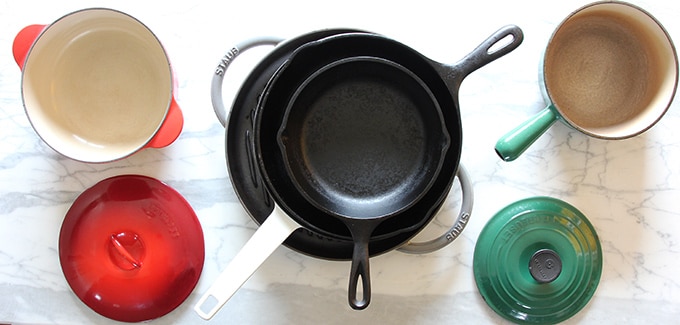
The Enduring Popularity Of Cast Iron And Le Creuset
It seems that every cooking show and every cooking celebrity worth his or her salt is using Le Creuset. You can spot the beautifully colored cookware easily. It is like no other. Why is everyone loving it?
Cast iron harkens back to a simpler time, when cooking was more meaningful, when it was necessary, and when it was a massive part of people’s lives.Click To TweetThe answer is simple. It works better than anything else. It is also beautiful, and functional. And it is the most heritage brand of its class, with a nearly 100-year history. Le Creuset’s closest competitor, Staub, started business only in 1974.
Cast iron’s history goes back 2,000 years, long before stoves were invented, which wasn’t until the middle of the 19th century.
Cast iron was the cookware of choice for hearth cooking over an open fire. Pots used to be built with legs that could sit in the embers, and/or with handles that suspended it over the fire like a witch’s cauldron. The heavy metal takes a long time to heat up, but once it is hot, it retains heat well so as to maximize a limited and labor-intensive heat source.
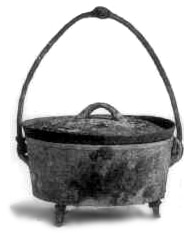
Cast iron is made from carbon-enriched iron, and contains silicone, manganese, phosphorus, and sulfur. The basic technology of cast iron has been relatively unchanged for millennia.
A problem with the original cast iron, and even bare (non-enameled) cast iron today, is that iron leaches out into the food. It can lead to a metallic taste, and possibly an imbalance of iron in the diet if you cook with cast iron all the time.
Our ancestors didn’t have any choice, but we do. Enameled cast iron completely takes care of this issue. It is non-reactive, and nearly non-stick. Anything can be cooked in it without concern for iron leaching.
The enamel, which is the key modern technological advance, also allows for the addition of gorgeous colors around the outside of the cookware for the simple beauty and enhancement of the kitchen environment.
I think serious cooks cherish enameled cast iron because it is beautiful, and because somehow it honors the cooking legacy of which we are a part.
Cast iron harkens back to a simpler time, when cooking was more meaningful, when it was necessary, and when it was a massive part of people’s lives. People’s days used to revolve around the growing, preserving, preparing, and cooking of food.
Today, cooking is more of a choice. So I think cooking with cast iron helps cooks connect more to their humanity and to the vulnerability of what it means to be human. I certainly feel more connected when I use cast iron—and enameled cast iron in particular—brings the best of the past into the present.
Why Le Creuset Is Worth It!
Large Le Creuset pots are very popular for soups, stocks, breads, baking, and more. I still hope to get a large Le Creuset. Even if I do, I doubt I would cherish it as much as my little one. A smaller pot is certainly more affordable. It could be a good starter piece for you (as it was for me).
I know how much use this pot has gotten, and there isn’t another brand that I believe can come close to its durability. For the $100 I spent in 1996 to buy it, I cannot think of a better investment. I would say the same to anyone today. It’s why I like to give enameled cast iron pots as wedding gifts.
There's never been an issue with rusting on this pot, nor with cleaning. Cast iron enameled pots clean up very easily, because nothing really sticks in them. A little soaking, and food residue comes right off.
There is no real maintenance either. It is unlike bare cast iron, or even Staub, which is Le Creuset’s main competitor in the United States. This ease of use is Le Creuset’s real advantage.
Learn how to season, clean, and maintain bare cast iron skillets.
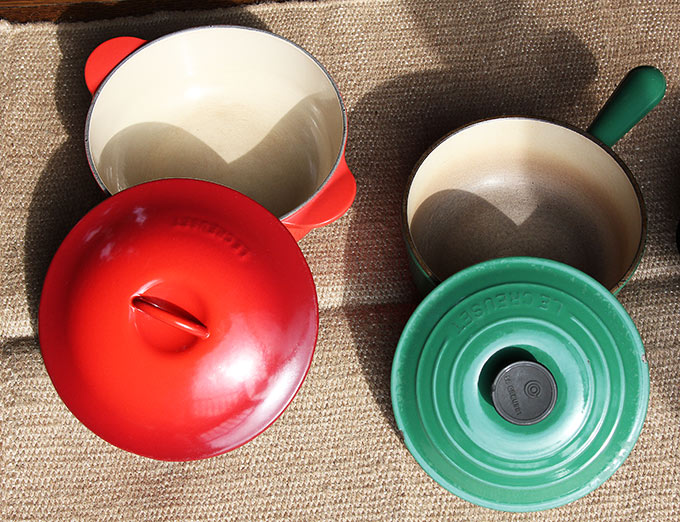
Made of cast iron that has been coated numerous times with a tough enamel coating, the surface is naturally non-stick as long as you understand how to cook with it.
Cooking in Le Creuset is best done on low-to-medium heat, and by giving the cookware time to heat up before adding raw ingredients.
Cooking in Le Creuset is best done on low-to-medium heat, and by giving the cookware time to heat up before adding raw ingredients. The heating step supports the cookware to do what it does best: retain and emit heat.
Since cast iron doesn’t conduct heat very well, it is susceptible to hot spots if you use high heat. Super high heat can damage enameled cast iron. I didn’t really know this until I did some research for this article, but it makes sense. Luckily, I intuitively followed this principle.
Cast iron cookware’s characteristic is to retain and emit heat. It means food gets cooked deep into the interior of the pot, and not just where the surface is touching the heat source. It is the ultimate slow heat.
So save your high heat cooking (such as searing), for bare cast iron, or for stainless steel cookware.
That said, I have no problem sautéing in my enameled cast iron. As a general principle though, I like to sauté on medium heat to protect the integrity of the cooking oil, and this why it works for me.
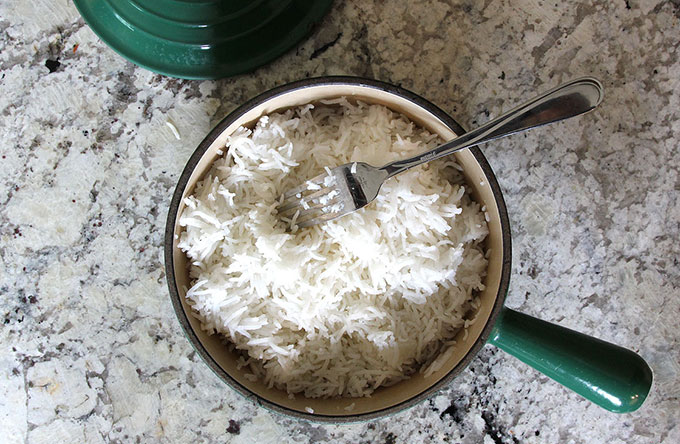
A Heavy Pot Is Perfect For Cooking Rice
Le Creuset is wonderful for cooking whole grains like rice. Once you’ve reached a boil, turn down the heat to very low, put on the heavy tight-fitting lid, and in 15 minutes (for white rice) turn off the heat with the cover on. The rice will continue to cook in the retained heat of the pot, resulting in perfectly soft grain.
A Le Creuset pot is heavy, but this is precisely its value. The heavy lid and heavy pot add a calming and energizing quality to the rice. The heavy lid allows pressure to build up inside the pot due to the enclosed, circulating steam. This is good for the rice.
There is also a calming and stabilizing factor imparted into the food by a Le Creuset. This comes from the fact that the entire pot, with lid, sits completely flat on the stove. Being so heavy, the pot and lid become a solid unit that firmly holds the food over the low heat. It is as if the pot nurtures the food.
Compare this sentiment to how a thin, warped pot wobbles while cooking. Or how steam in a thin pot can cause a lightweight lid to levitate as the steam forces its way out. This instability in the pot is transferred to the food.
Not to mention how easily things burn in lighter pots. Step away for a few minutes and it happens fast, right?
Not with Le Creuset! Step away for many minutes and you’ll find your rice caramelizing on the bottom of the pot long before it burns.
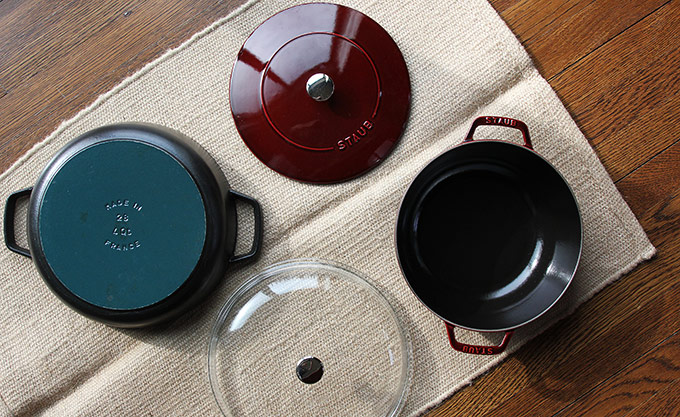
The Heritage Of Le Creuset Versus Staub
When you look at reasons why people love Le Creuset it usually comes down to their experience with this cookware. A lot of people have had a lot of experience with Le Creuset. Many have decades on me. These people generally attest to the wonderfulness of Le Creuset, as I do.
I cannot say the same about Staub. Some people say they love Staub, but there isn’t the same history there.
Although both companies are based in France, and both manufacture in France using traditional methods, these are two very different companies.
Le Creuset opened its foundry in 1925 in the French town of Fresnoy-le-Grand, Aisne, Picardy, at a strategic location that had plenty of access to iron, coke, and sand, the raw materials needed to forge cast iron. The first product was called a cocotte, also known as a French oven, also known as a large pot with straight walls and a tight-fitting lid.
Le Creuset's first color was Flame orange, which was inspired by the molten iron used to make the French ovens. Le Creuset’s current factory is still painted in Flame color in honor of its heritage, and the company still produces cookware in this same color (in addition to many others).
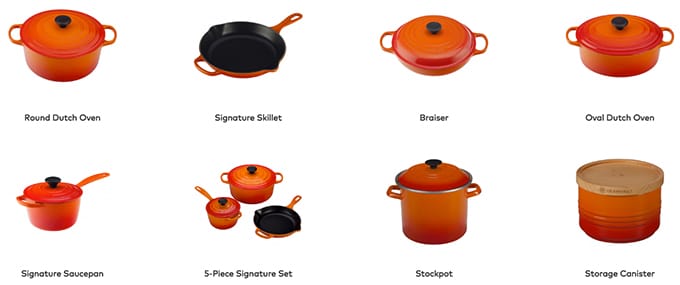
Creuset is French for crucible, which refers to the molds used to cast the cookware, which are made from sand and used only once in the case of Le Creuset, even to this day. Each mold is cracked after a piece is poured, making a Le Creuset pot one of a kind.
A 12-step finishing process and 15 different craftsmen will check the cookware before it is ready for sale. Apparently, about 30 percent of the pieces are rejected by Le Creuset’s quality control.
Some people say they love Staub, but there isn’t the same history there.
Staub, on the other hand, opened for business in 1974, in Turckheim, Alsace, France, in a dormant artillery factory. It also manufactured a cocotte as its first piece. It was designed by Francis Staub, who obviously named the company after himself.
Staub was acquired by Zwilling J. A. Henckels in 2008, but it continues to operate as an independent brand, although it is difficult to see from the company’s marketing how it has maintained its heritage.
Staub advertises itself as the choice of chefs, and this really makes sense due to the company’s durable interiors, which are suitable for restaurant use. The company’s branding focuses on its technology. Making the leap onto the table for home cooks isn’t as obvious for Staub.
Le Creuset seems to know Staub’s weakness. Read the first sentence on it’s About page and you get this: “Le Creuset is focused on inspiring and empowering people everywhere to make joy through cooking.”
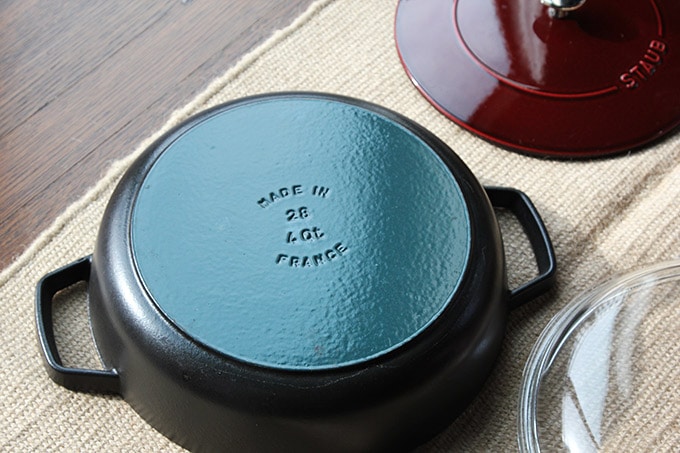
Comparing The Cooking Surface: Le Creuset Versus Staub, Versus Cast Iron
One of the biggest differences between Le Creuset and other cast iron brands is its cooking surface. After a piece of cookware is cast, it is sanded down to create an ultra smooth (even glossy) finish. It is a beautiful thing to behold, and beautiful for cooking.
To compare, today’s non-enameled cast iron cookware is also cast in sand. While you can purchase regular cast iron for way less than Le Crueset or Staub, it comes with a rough, pebbly surface. This texture is exactly the indentations from the sand.
The indentations must then be “smoothed” by the home cook through the process of seasoning. This involves coating the pan in vegetable oil and subjecting it to high heat, which forces the oil to bond with the iron, effectively plasticizing the surface.
This must be done multiple times, with each iteration improving the cooking surface. In truth, it can take months or years to get a nice surface. Still, it will never get as smooth as a Le Creuset out of the box.
By the way, the old cast iron cookware used to get ground down before sale. This is why some people go crazy looking for old skillets at antique stores, on eBay, and in their grandparent’s cupboards. This is not a bad idea. Maybe you have a treasure around you waiting to be discovered!
Staub has a unique perspective for their surfaces. It sells its enameled cast iron cookware with some of the pebbly texture retained. It looks similar to regular cast iron, but it isn't. It doesn't react to acid foods, so you are safe there.
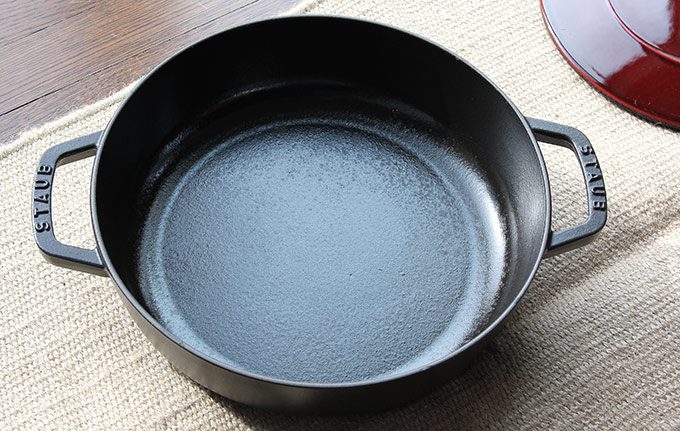
The company claims its surface is an advantage for the home cook, as it enables the pan to be seasoned the traditional way, and that ultimately one gets an even better cooking surface than … what? I don’t know.
In fact, Staub also says you will get tastier food, because the fat you use for cooking penetrates into the pores of the matte enamel coating. (Hmmm … I am not sure that sounds appealing.)
The issue with this (aside from the questionable point of it being a better surface than Le Creuset), is that you now must care for your Staub cookware more carefully. You are advised to dry it after use, oil it, heat it to the smoke point, and cool it before putting it away.
I am not convinced by this so-called benefit, and neither are many others who have commented in forums about this issue.
I also own a few pieces of Staub cookware, and it is not as smooth and non-stick as Le Creuset (see image above).
I have the 3.75-quart Essential French Oven in gorgeous grenadine (a glossy maroon), and I think the surface of this beauty is getting smoother over time.
Staub's interiors are all black. The company says the black interiors are “virtually indestructible,” and that they were designed originally for heavy use in restaurants. This makes sense. In fact I have seen it in restaurants. They also say the black may turn brownish over time. I haven’t had mine long enough to prove this.
Le Creuset’s interiors are glossy and cream colored. I think the cream makes it easier to appreciate cooking processes, such as the caramelization of onions, or the beauty of a fresh tomato sauce against the light background. It is simply more cheerful inside a Le Creuset.
Staub's Unique Lid Design
Staub really differentiates itself with its unique lid design. According to the company’s website, “self-basting spikes on the lid create a rainfall effect, evenly returning juices back onto the food.”
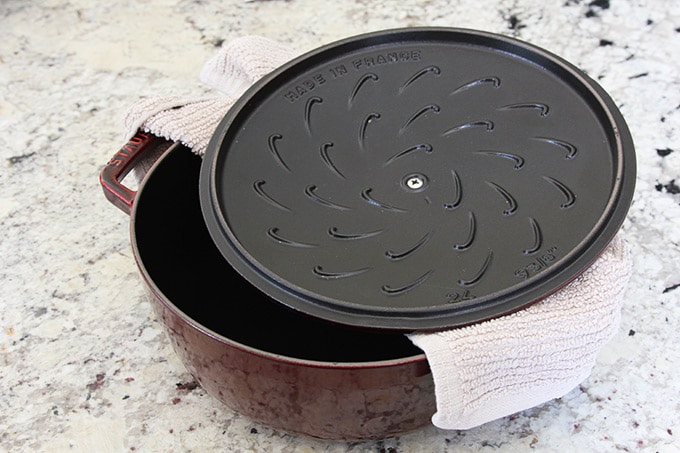
The curved spikes on the lid, I learned from the UK-based Staub website, are shaped like the racket used in Chistera, a popular sport played in the gastronomically renowned Basque region. I think they look more like Nike’s swoosh. In fact exactly like Nike’s swoosh!
Staub claims 10 percent more moisture is retained inside their cookware after 55 minutes of cooking than in products from their competitors, and also that the lid is nine times more effective than conventional lids. So if this is important to you, Staub is your choice.
My guess is that this self-basting system is most useful when cooking meat.
Le Creuset Versus Staub
Side by Side Comparison Chart
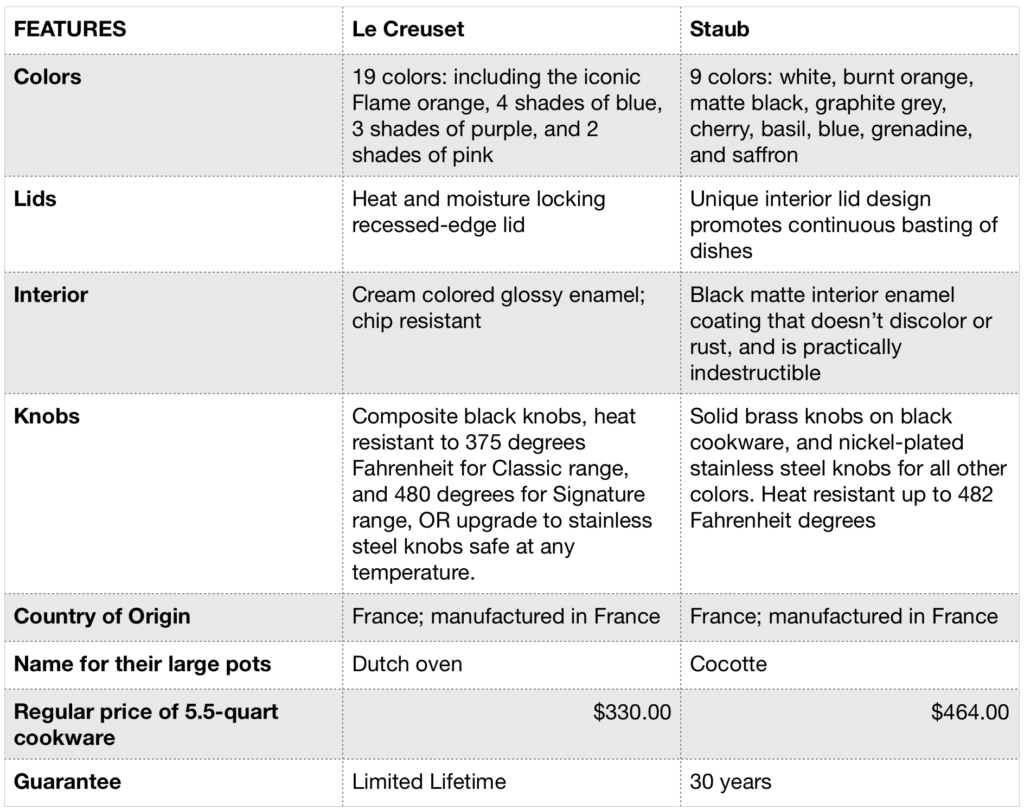
Care and Use Comparison
Enameled Cast Iron Care Do's and Don'ts
- DO use wood, plastic or silicone utensils for cooking
- DO wash by hand
- DO allow the cookware to cool before washing or adding soaking water
- DO soak in warm water if necessary
- DO use a gentle scrubbing sponge for washing
- DO use warm soapy water for washing
- DO consider purchasing Le Creuset’s cleaning product
- DO NOT wash cookware in the dishwasher (it's allowed, but not recommended)
- DO NOT use metal on the cooking surface of Le Creuset
- DO NOT emerge hot cookware in cold water
- DO NOT use abrasive scouring agents or sponge
Learn how to season, clean, and maintain bare cast iron skillets.
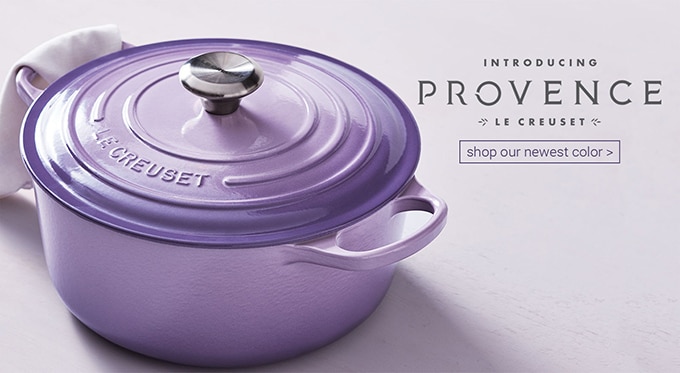
Best Places To Buy Le Creuset Cookware
Lets face it, Le Creuset is everywhere. It is at Macy’s, Crate and Barrel, and Bloomingdale’s. It is almost always featured at specialty kitchen stores like Williams Sonoma, Sur La Table, Cooks Nook, and more.
Sometimes Le Creuset goes on sale at these stores. What I usually see is they will feature a single piece, or a particular style. Since Le Creuset is an investment, it is worth shopping around and waiting for just the right opportunity.
Off-price department stores like Marshalls, TJ Maxx, and HomeGoods sometimes sell Le Creuset at a discount. Of course, the selection will be extremely limited at these stores, so do your research online to make sure you are getting exactly what you want.
By the way, Le Creuset just came out with a new color, a gorgeous lavender color they have named Provence after the lavender fields of southern France.
Le Creuset offers the most colors of all the brands, a total of 19, and they have retired nine colors. So think carefully before you start collecting. My little pot is a retired green color they called Farm-Fresh Fennel.
Amazon can also be a great option to compare prices and look for deals.
Okay, I have saved the best for last! Probably the best place to shop if you are on a budget is at one of Le Creuset’s 70 outlet stores across the United States where they feature value-priced opportunities on first rate products, as well as deals on seconds. These stores are all Le Creuset, all the time, and they are huge and filled with options. Super cool!
Find those outlet stores, and sign up for their mailing list.
Best Place To Buy Staub Cookware
Staub is owned by Zwilling J.A. Henckels, the company best known for its knifes featuring high quality German-made stainless steel and riveted black handles.
The parent company regularly sells its highest quality Staub cocottes and other items for 30 percent off, or more. But they also offer factory seconds of items with visual imperfections. You can get some amazing deals, up to 75 percent off, and there is free shipping on orders over $59.
You can find 30 percent off deals here.
To go directly to the factory seconds, click this link.
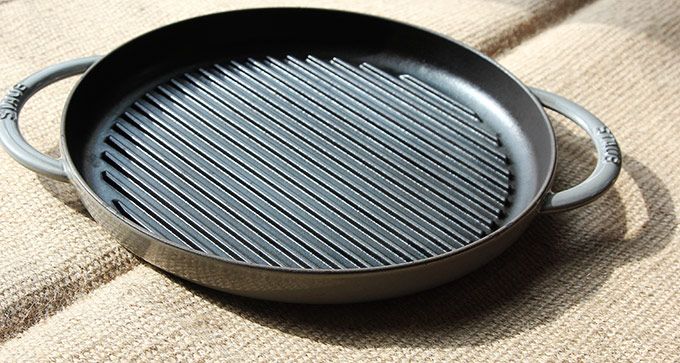
Beware Of The Many Knockoff Brands
There are many other enameled cast iron cookware brands out there. Expect limited color selections, a higher likelihood of chipping, discoloration, and cracked enamel, and uncertainties about quality, given they are across-the-board made in China.
There is no way these will have the staying power of the real thing, but you can still get some beneficial cooking qualities out of them if you are on a budget.
Celebrity chef Mario Batali has a brand made by Dansk, which is made in China, and sold in mass retailers such as Bed Bath & Beyond, Kohls, and previously, Target. Its design is more modern and straight-lined.
Rachel Ray has some options. Martha Stewart has cookware sold at Macy’s (which I unfortunately bought, and the interior is now damaged after just a few uses). Cuisinart is also there with some good reviews.
Serious Eats has a good post comparing pros and cons of knockoff brands.
Lodge, which is best known for its non-enameled cast iron, and for manufacturing in America (see caveat two paragraphs down), also makes coquettes, which it aptly named Dutch Ovens. It was the Dutch who invented the method of casting metal in sand (instead of the traditional loam and clay), and I suspect Americans are more familiar with the name too.
The Hungry Mouse did a comparison of an old Le Creuset with a Lodge and declared its cooking qualities equal. Endurability was not assessed as part of the review.
However, a big caveat! Lodge’s cast iron cookware is also made in China. As a result, one would expect to practice Buyer Beware. Cheaper is not always worth it.
If you liked this post, please leave a comment below, or share it with your friends on social media.
Stay in touch by following me on Pinterest, Facebook, Instagram, and Twitter.
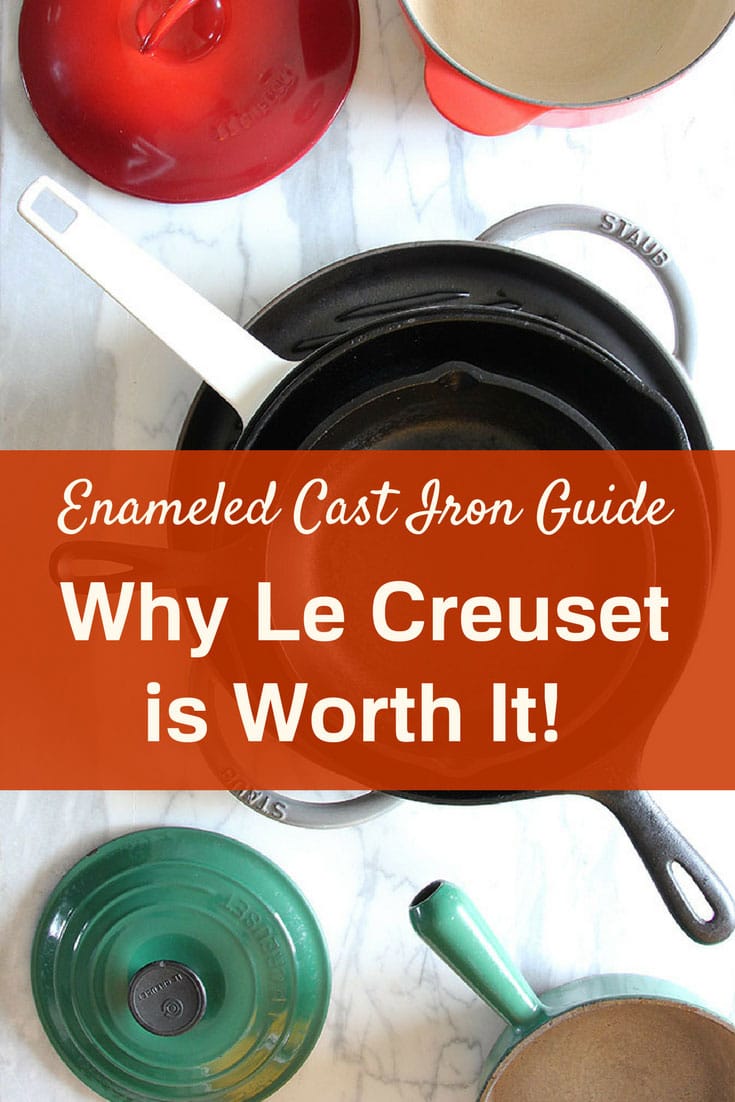



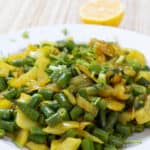
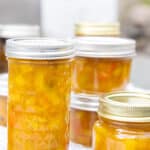



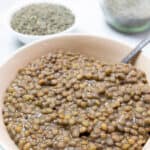

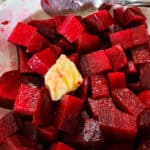


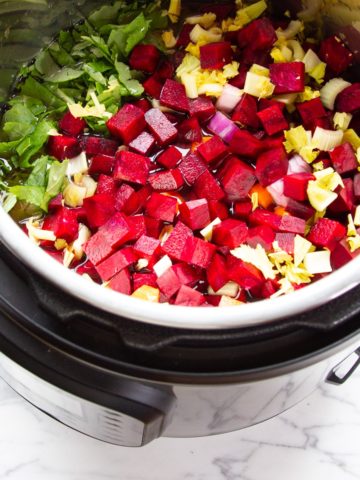
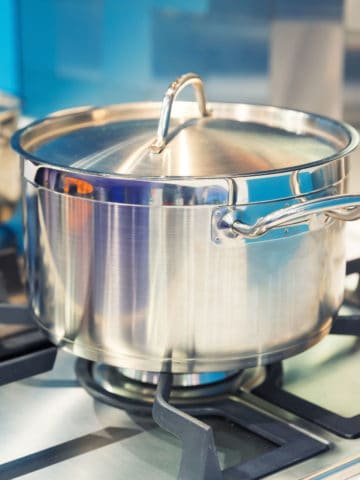
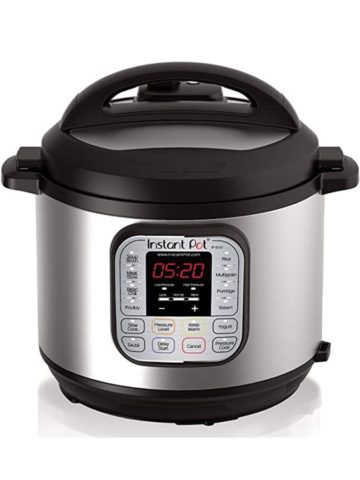
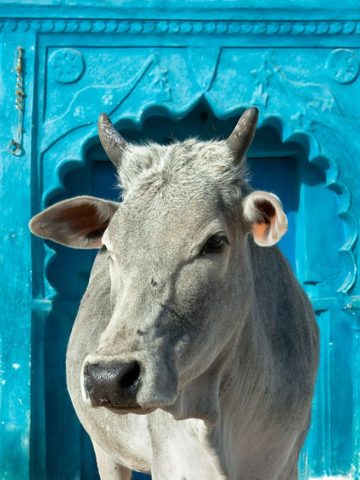
Mari
It is clear from your article Staub is not your personal preference.
I must say, after experience with both brands and originally believing Le Creuset was superior, I have crossed over to Staub and completely changed my mind. I am definitely a visual person and like the color choices of Le Creuset but after using Staub, I would but Staub if it only came in one color that I didn’t even care for.
I highly recommend you give Staub a serious try, it’s amazing cans I’m not an easy sell.
Andrea
Hi Mari,
Thanks for sharing your experience, and for your recommendation. I do own a few cast iron pots made by Staub, and I like them very much too. The indestructible interior surface is a serious bonus! At the same time, as a chef, I love the lighter interior surface and weight/feel of Le Creuset a little bit more. Rest assured, you can't go wrong with either choice! Happy New Year! --Andrea
kimcheelove
I really enjoyed this article. I read it over a year ago and it convinced me to buy an LC saucepan myself. Recently I was trying to find this again and I had such a hard time, but finally found it! I too am fond of both LC and Staub--they both have their places. The one thing I really love about LC is how noticeably lighter and thinner the pieces are than Staub. It seems that all the comments that talk about Staub being "better" never discuss that having a big pot that is full is really, really heavy!! Moving them from the stove to oven and back can be quite a challenge! Staub feels like a solid tank in my hands while LC feels like a delicate ballerina. I also have a Lodge double dutch and Tramontina DO. They all make me happy and are useful! Be well and stay safe!
Andrea
Hi, Thanks for sharing this. I totally agree, and love your descriptive language, tank vs. ballerina. They both have their place indeed. I enjoy the light inner color of LC, so I can admire the beauty of the spices and food inside the cookware. — Happy Cooking, Andrea
Elizabeth Collins
As an owner of Staub and Le Creuset, I can say that hands down Staub is the better of the two for a number of reasons:
Le Creuset have a vitreous enamel interior, Staub have a porous more hardwearing enamel interior = longer lasting as well as after use develops a non-stick patina that really elevates flavours with cooking - much in the same way that raw cast iron does
Staub has the basting spikes within their lids that essentially collects moisture when cooking and continually drops it onto whats cooking below - makes a notable difference with lamb roasts as i've tested
Staub in my opinion has a far nicer finish than Le Creuset. Le Creuset i feel puts all the money in their marketing / flagship stores these day and is especially evident by the fact that ALL of their cookware that isn't cast iron is actually made elsewhere i.e China for their non-stick cookware and Thailand for their stoneware, all while fooling customers in thinking it's all made in France which it isn't.
Ask any professional chef, Staub is actually used in more commercial settings than Le Creuset globally
Andrea
Thanks for the amazing and helpful comment Elizabeth,
I totally agree that Staub is better for commercial settings. Its interior is more forgiving with spoons, and well maybe indestructible, but it is also black, and I personally love seeing the colors of my food and spices in the light interior of Le Creuset.
Take care, Andrea
Stephanie
Hi. I just wanted to note that your comparison chart is misleading. Staub is heat resistant up to 250 CELSIUS. You did not indicate that. Staub knobs come with a higher heat resistant knob than me cruset. .
Andrea
Dear Stephanie, Thank you so much for pointing out this oversight. I have corrected the chart based on your feedback. Take care, Andrea.
CK
for some reason I felt this was a le creuset advertorial, rather than a real comparison. Unfortunately I am known as a meticulous researcher when it comes to buying an expensive piece for me. Researches are ongoing and searches can take up to a year, if not longer. I compared and contrasted le creuset and staub. I went for staub and I have no regrets. The seasoning is junk for those who still believe enamelled cast iron needs oiling and searing. My staubs cook like heaven and clean like a breeze soak them and use a brush no detergent. like new every time. Dark grey finish almost non stick on induction and I never go over 7 on it, it heats up to 12. Le creuset now offers black matt enamelled pots as well exactly due to staub's success. No, I do not like the cream interior turning dark. I only use silicone, nylon or wooden spatulas and tongs.
Andrea
Thanks for your comment and your very useful testimonial about both brands. I own both Staub and Le Creuset, but I enjoy using Le Creuset more. I didn't know that Le Creuset has a black interior now. Thank again!
Thom
Le Creuset is for people who like colors.
Staub is for people who like to cook.
Andrea
Now that is clearly stated! For those who are wondering, Staub has some nice colors too!
Juan Camilo Houter
Maybe when you compare their kettles, you see the difference in their philosophy. Staub uses only 5 or 6 parts in their kettle, whereas Creuset uses.... a lot. Which is not per se better for durability.
Also, wear and tear on the inside of a pan... to me seems highly unhealthy. You eat those particles sooner or later...
Nonetheless I also use both in my kitchen!
Andrea
Hi Juan,
Excellent point about the wear and tear on Le Creuset versus near indestructible nature of the Staub. I didn't know about the number of parts. Thanks for that!
siditty
Staub usually has great sales and can be found at Williams Sonoma and Sur La Table as well. I purchased a 4 qt in cherry red for $99. Staub has less colors, but they do have limited edition colors and styles like Le Creuset.
I personally love both Le Creuset and Staub and feel both have a place in the kitchen.
Andrea
Hi siditty,
Happy to hear that you had a good experience with both Le Creuset and Staub. I own both, and I agree that they are both wonderful. Thanks for the shopping tips, and thanks also for reading. Take care!
Lc
Bottom line: Lecruset look nice, but feel 100 thousands times more delicate than staub. It becomes incredibly annoying to soak the pot every single time, then follow up with baking soda or even bleach to clean. Le Cruset simply isn’t a tool for the kitchen, It’s a showcase.
Andrea
Hi! Thanks for the comment. I just received a 5.25quart Le Creuset Dutch Oven as a gift, and I agree that it does FEEL delicate compared to my Staub cookware. And I agree that the inside of the pot does discolor, and I don't bother with bleaching it, but the use of my trusty green LC saucepan over 20 years of 3-5 times per week use (NOT KIDDING), bears out that LC is still durable. It is still just as nonstick as it was when I bought it.